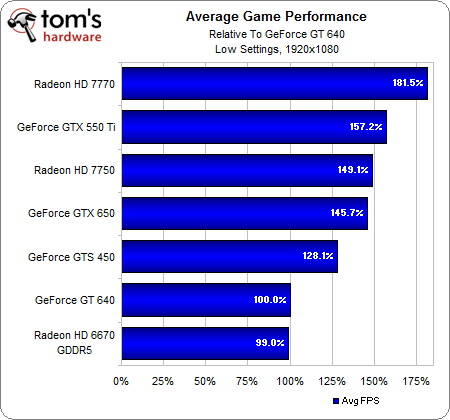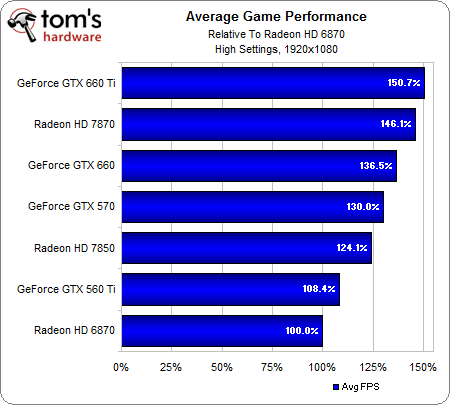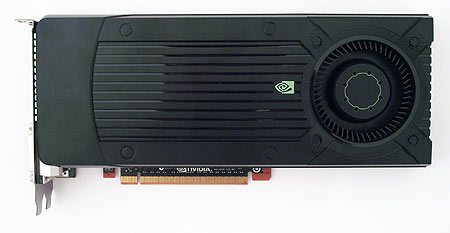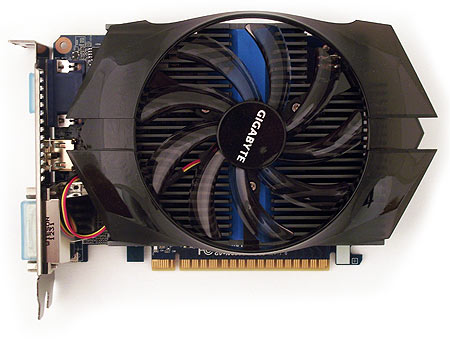Nvidia GeForce GTX 650 And 660 Review: Kepler At $110 And $230
We have two new graphics cards in the lab today: Nvidia's GeForce GTX 650 and 660, filling the gap between its GeForce GT 640 and GTX 660 Ti with Kepler derivatives. Are these GK107- and GK106-based boards able to challenge the Radeon HD 7750 and 7850?
GeForce GTX 650 And 660: Nvidia Fights Back
With two new graphics cards in the lab, we'll analyze their performance one card at a time. First up is the GeForce GTX 650.
The GK107-based GeForce GTX 650, at $110, does battle with AMD's Radeon HD 7750. It's about as fast as the similarly-priced competition on average, and notably faster than the GeForce GTS 450.
We were frankly a little surprised to see the GeForce GTX 550 Ti do better. But, at $120, it's too close to the $130 Radeon HD 7770, which is clearly superior.
In any case, we'd happily endorse the $110 GeForce GTX 650 as an alternative to AMD's Radeon HD 7750, which also retains its recommendation. Now, let's look at the GeForce GTX 660.
Nvidia's new retail GeForce GTX 660 delivers impressive performance for $230, and it easily outperforms the $210 Radeon HD 7850, falling just shy of the $260 Radeon HD 7870. It earns a recommendation between AMD's competing price points.
In addition, we've seen that the GeForce GTX 660's overclocking headroom allows it to approach the performance of a pricier GeForce GTX 660 Ti at its stock clock rates. It remains to be seen how retail cards compare.
As an aside, we're showing the Radeon HD 7870 slightly behind the GeForce GTX 660 Ti in this chart. Our GeForce GTX 660 Ti launch coverage saw the Radeon a few points ahead, and we noted that the situation could change based on the games, settings, and resolutions measured. On average, these cards perform very similarly, no matter how you break things down.
Get Tom's Hardware's best news and in-depth reviews, straight to your inbox.
Interestingly, both Nvidia and AMD have serviced the $150 to $200 segment with previous-generation cards like the Radeon HD 6870 and GeForce GTX 560, and we wonder if we'll ever see a crippled GeForce GTX 660 or Radeon HD 7850 to take over the same price point.
It's clear that a $110 GeForce GTX 650 and $230 GeForce GTX 660 are strong additions to Nvidia's portfolio. Based on the company's track record with 600-series cards so far (aside from the GeForce GTX 680, that is), we have no reason to believe supply will be problematic. We're happy to see Kepler-based mainstream cards, both of which are able to game at 1920x1080, fill in more of the pricing band.
Current page: GeForce GTX 650 And 660: Nvidia Fights Back
Prev Page Temperature And NoiseDon Woligroski was a former senior hardware editor for Tom's Hardware. He has covered a wide range of PC hardware topics, including CPUs, GPUs, system building, and emerging technologies.
-
EDVINASM Was waiting for GTX 650 to see if it can beat the old GTX 550 Ti but it seems other than power draw it's no match. Might as well keep my GPU until next NVidia lineup. GTX 660 on other hand is only €50 cheaper than GTX 660 Ti meaning its a no budget saver to buy non Ti version. Fail...Reply -
mikenygmail Buy a 7770 or 7870 instead.Reply
Wait for sales on whichever one is needed and then grab one -
AMD 7770 can be had for just over $100.
AMD 7870 can be had for about $220. -
lahawzel Goddamn Mike NY Gmail or whatever the hell your name is supposed to be, here, proper commenting etiquette:Reply
1. Read the article.
2. Understand what the article is talking about.
3. If you find an urge to comment about "______ sucks" or "_______ wins again", especially when the article says the opposite of what you want to post, chances are your comment will look dumb as hell when it's posted and earn you 20 downvotes. Therefore, don't post that goddamn poor excuse of a "comment". -
tomfreak How "nice" of u tomshardware. By only compared 7750/7770 vs 650 in high detail but not comparing 7750/7770 on the Ultra detail, then when u pull out a 460 SE/9800GT for benchmark, u are taking away 650(why?).Reply
Is it because 650 performance is too poor to show off on benchmark? It doesnt take a genius to figure out the huge diff between 6870 vs 650. 7770= 6850 speed. So I guess even the 7750/460SE are putting shame on 650 on those high quality detail? too shy to show off 460SE/9800GT up against 650?
I dare u put on a detailed benchmark with 650 up against 7770/7750/GTS450/550ti/460/9800GT/9800GTX on all condition. Not a selective benchmark. -
Why are there giant gaps in both lineups? AMD has the 7770 at $130 and 7850 at $230 -- nvidia has the 650 and 660 at similar price points -- ideally for my budget would be something in the $150-170 price range, but I either have to compromise or shell out more. It seems like an obvious market gap.Reply
-
mikenygmail LaHawzelGod damn Mike NYThanks for the attempted compliment, but call me Mike. I'm glad you've been paying attention.Reply
It was more of a joke than anything else to simply write "AMD wins again!" and it was actually pretty funny! I try to balance things out so that no one company is viewed too favorably.
For example, I recently bought an Nvidia GTX 460 1 GB 256 bit card for $70, new, with a 3 month warranty for a friend to upgrade his gaming computer. Unusual? Yes. Great deal? You better believe it! Of course, if an equivalent AMD card was available at a cheaper price, that's the one I would've bought.
Now, relax and try to control yourself. Refrain from the use of profanity in future posts. Thanks.
-
EzioAs Nice article to be honest. I'm really glad you tested the Radeon cards with the new driver compared to other review sites.Reply
I've got nothing else to say on the GTX650 but to just point out that it's a weak card.
On the other hand, the GTX660 is probably the only Kepler (besides the 670) that impresses me. I don't know about everyone else though. To point out one thing, most Radeon 7870s can be found at $240 or lower without MIR. The GTX660 is priced well for a release MSRP and makes the 660ti offers less value, kind of like the 670 vs 680. For 8xMSAA, the performance does cripple but I think at this price point, most people are going to stay with 4xAA or possibly lower. -
mikenygmail EzioAsNice article to be honest. I'm really glad you tested the Radeon cards with the new driver compared to other review sites.I've got nothing else to say on the GTX650 but to just point out that it's a weak card.On the other hand, the GTX660 is probably the only Kepler (besides the 670) that impresses me. I don't know about everyone else though. To point out one thing, most Radeon 7870s can be found at $240 or lower without MIR. It's priced well for a release MSRP and makes the 660ti offers less value, kind of like the 670 vs 680. For 8xMSAA, the performance does cripple but I think at this price point, most people are going to stay with 4xAA or possibly lower.Reply
Exactly - Savvy TH readers will wait for sales on whichever one is needed and then grab one!
AMD 7770 can be had for just over $100 on sale.
AMD 7870 can be had for about $220 on sale.



